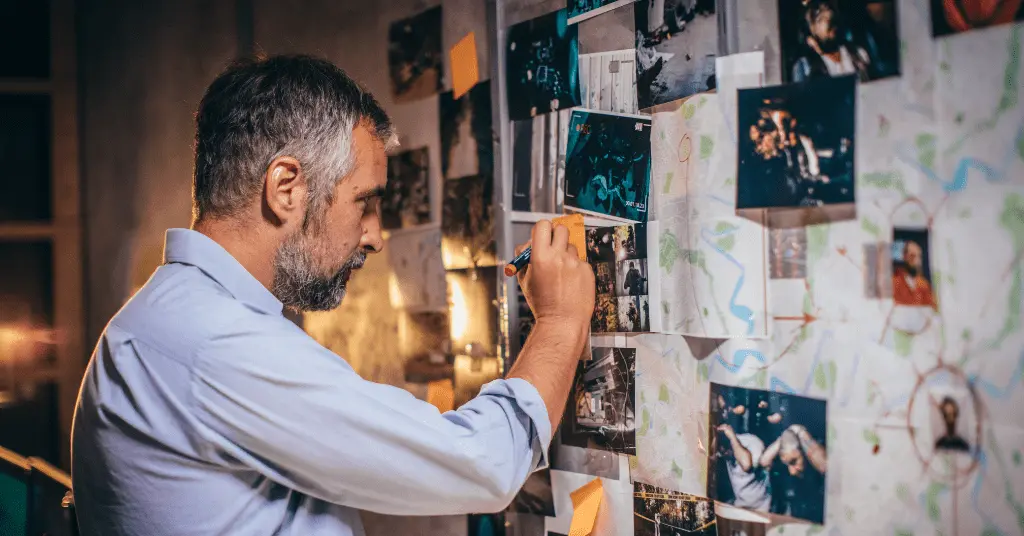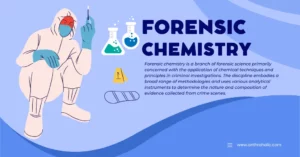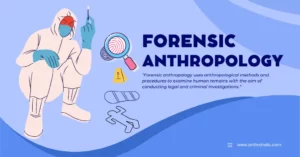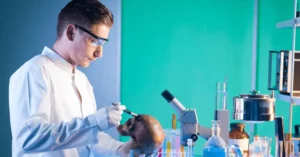AI Answer Evaluation Platform Live Now. Try Free Answer Evaluation Now
Criminalistics
Criminalistics is the scientific study of crime. Criminalistics, which is also known as ‘Forensic Science’ in simpler terms is an application of various general sciences like biology, chemistry, physics etc., and applied sciences like biotechnology, DNA typing, life sciences etc. in the court of law for the administration of Justice.

Criminalistics is often confused with the discipline criminology, Criminalistics is the scientific study of crime, crime scene and various evidences that aids in investigation and thus delivery of justice whereas Criminology is the application of various social science disciplines like psychology, behavioural science, sociology, Anthropology etc in studying crime and criminal, preventing crime and rehabilitation of criminals. Both of them are subsets of the criminal justice system, one comes in application before the commission of crime while the Criminalistics comes only after a crime has occurred.
Pioneers of Criminalistics
Bernard Spilsbury or commonly known as Sir Arthur Conan Doyle’ is considered to be the pioneer of forensic science or Criminalistics. He is famous for creating the character Sherlock Holmes and writing fictional stories related to investigation and criminalistics. The father of modern Criminalistic is Dr. Edmund Locard. He gave the seven fundamental principles of forensic science.
Apart from them, Paul L. Kirk who was a Biochemist and criminalist is also considered as the father of criminalistics. He gave the principle of individuality and according to him “As long as crimes continue to be committed, there will always be work for criminalists. A criminal will always leave evidence, no matter how minute. Wherever he steps, whatever he touches, whatever he leaves, even unconsciously, will serve as silent evidence against him. Not only his fingerprints or his footprints, but his hair, the fibres from his clothes, the glass he breaks, the tool mark he leaves, the paint he scratches, the blood or semen that he deposits or collects – all these and more bear mute witness against him. It is factual evidence. Physical evidence cannot be wrong; it cannot perjure itself; it cannot be wholly absent. Only its interpretation can differ and Only human failure to find it, study and understand it, can diminish its value.”
Role of Criminalistics.
The role of criminalistics starts from the crime scene itself just after the crime has been reported till the hearing of the case in the court of law until justice is served. Criminalistics involves the application of scientific techniques in locating the crime scene, seizing it, searching for physical evidence, the documentation of crime scene and evidence, collection of evidence, packing and preservation of evidence, transportation of evidence to forensic science labs, analysis of evidence and report making. It also specifies the role of criminalists in testifying as an expert in the court of law, which is known as expert testimony.
Criminalists examine or analyse the evidence, compare it with the standard sample, interpret the result and make the report that is just the scientific interpretation of the result without any personal opinion or biasness. It is the duty of the criminalist to keep the evidence un-altered or un-tampered and give the result solely on the basis of application of objective scientific techniques and standards. Forensic scientists need to be very careful and accountable as their one mistake could prosecute an innocent and release the culprit.
Scope of Criminalistics.
Criminalistics includes the examination of trace and physical evidence, biological evidence, chemical evidence, toxicological evidence , ballistic evidence, photographic evidence, narcotic evidence, digital evidence, questioned documents, fingerprints, anthropological evidence,medical evidence etc. These types of evidences consist of blood, semen , saliva, DNA, fingerprint, footprint, shoe print, palmprint,fibres, glass, paint, soil, pollen, insects, diatoms,alcohol, drug of abuse, pesticides, bullets, firearms, petroleum products, arson elements, harddrive, computers, cellphones, gait pattern,speech recognition, dead body, skeletal remains, currency notes, suicide notes, will, cheques, serial numbers, explosive materials, skid marks, tyre marks etc and all kinds of crime scenes that includes indoor crime scene, outdoor crime scenes, mobile crime scenes, primary crime scenes and secondary crime scenes.
The role and scope of criminalistics is rising day by day. The types of technical advancements in each sub field of criminalistics is leading criminalistics towards a bright future. The novel high end tools and techniques will be helping the criminalists to perform the examination of evidence in bulk without a chance of human error or tampering, this will lead to submission of reports on time and thus will help the justice system to clear cases and serve justice at a faster pace.




